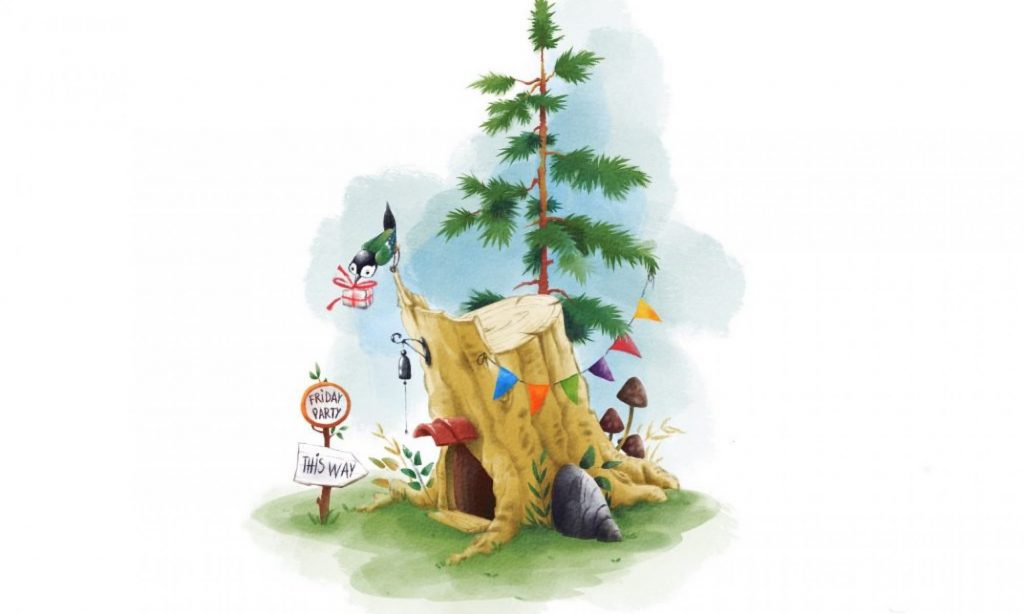
Lately this month, I researched personality from the Latvian animation industry for my course presentation.
In the beginning, I struggled with the choices, since I wanted to work on someone whose work I love and appreciate. So, I went deep into my heart, and I recalled one. Full of beautiful music and peaceful story. It was the Fairy Tale Set On Doorsteps, 1987. It is a work of Rose Stiebra.

Mrs Stiebra was born in Riga, in March 1942. She is well-known and noticeable Latvian director, animator and screenwriter. She got her degree in Leningrad (now Saint Petersburg) on Faculty of Puppet Theather in 1964. In 1969 she with her lifetime partner Ansis Berzins made the first Latvian short animation film in cut-out the technique (Rainy Day, 16 min) and later opened first animation department in Latvian National Television. In 1983 she produced a first hand-drawn animation film The Pocket (6min). In 1991 Rose Stiebra opened animation studio Dauka where she with Ansis Berzins created first feature long hand drawn animation Ness and Nessy, 1991. Overall, during her career, Mrs Stiebra works on moreover 60 movies and got several awards from local film festivals as well as The Lifetime Achievement Award at Fredrickstad Animation Festival in 2018, and Order of the Three Stars- the highest civilian order in Latvia.
Now let me step back in time a bit and tell you a about the history of animation in Latvia.
Well, Latvia struggled from occupations most of the time. Whoever it was they always leave behind some marks on peoples lives, language and strongly influenced on country’s creative environment.
We can find some shreds of evidence that society started interested in animation from the 30s when the country was free. At that time were shown Disney’s Alice Wins the Derby (1925) and films from Germany and France.
In Latvia animation begins only like experiments and researches by amateur individuals and small teams. And they screened them only in local communities. At that time, animated films seemed mostly like tricks and magic.
After WWII, Latvia becomes part of the Soviet Union. Hence, before animation production comes insight to the country, all animation that was obtainable was either from Moscow or neighbouring countries from the Union. And Latvia in film industry overall featured mostly as part of Soviet Union. Yet it doesn’t mean that people were provincial. They were interested in the cultural world around them.
But its all starts in the 60s, then the film industry and animation gain more interest, and film enthusiasts gathered together annually to show their work and exchange the knowledge.
Yet, as we can see, to get professional training and education Latvian artists should visit neighbouring republics and Moscow. Some of them even stayed there to work in Sojuzmultfilm (Rasa Strautmane (1930-2009)).
And Mrs Stiebra was one of these artists.
– We went to study in Moscow. However, we only learned technology because we deliberately distanced ourselves from being influenced by ideas. Making cartoons was kind of a protest. We wanted to make our own Latvian cartoons, because before that in Latvia only Russian cartoons were shown, just like now American ones.
And she did it!
Her films are very peculiar. Very Latvian. They are full of artistic essence, featuring great content provided by outstanding Latvian poets and writers, original music by Latvian composers, and collaborations with renowned painters. You won’t find a lot of evil or violence in it.
In the 60s-80s, the children’s animation was dominant in Lativa. As Roze Stiebra said in one of the interviews, that this was a more comfortable way to avoid censoring. However, she loved making cartoons for kids. They used to meet children and ask them about cartoons and researched these results.
As we know, the animation is a teamwork.
And during all these years Stiebra worked together with many artists, graphic designers and painters. And she tried to keep the originality of their styles, tried to find ways to show these uniqueness. Further, they even have developed their distinctive designs by which you can recognize cartoons created by a particular artist.

All of her animations are based either on poems or on Latvian fairy tales. Her love for poetry challenged her to find a way to express poetry in animation.
Here what she mentioned in one of the interviews:
So, she combined these two forms of art. And they become a vital part of Stiebra’s films. At this point, music not only complements the picture, but it is also an inherent part of it.
And this majestic combination goes through all her films and make them genuinely Latvian.
Based on Vilis Pludonis poems
I’d like to summarize by saying that I entirely agree that animation is a powerful tool to provoke and aware society about global and social problems, as well as fantastic entertaining implement, and teaching and educating technique.
But at the same time, I think that in our stressful, unstable times we still should make the difference- create peaceful and kind works that will show us the beauty of art, poetry and music.
